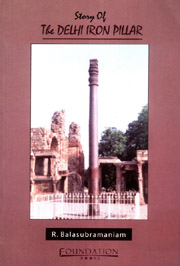5 - The Pillar's Resistance to Corrosion
Published online by Cambridge University Press: 26 October 2011
Summary
The Delhi Iron Pillar shows very negligible signs of rusting. This particular feature has greatly enhanced the significance of the pillar in the engineering and scientific community. We shall explore in detail this fascinating aspect of the Delhi Iron Pillar, and try to understand the probable reasons for its excellent resistance to corrosion. We shall also examine various theories that have been proposed to explain this quality. There are some limiting conditions regarding the resistance of the pillar to corrosion. It must be realized at the outset that the excellent resistance to corrosion of the pillar relates only to the upper part which is exposed to an atmospheric environment. Had the pillar been completely buried or exposed to complete immersion conditions, the iron in the pillar would have corroded like normal iron. The resistance to corrosion of the pillar is attained very specifically in the atmospheric environment.
What is Corrosion?
You must have observed that when any iron object is exposed to the environment, it develops a dull reddish or brown coating on the surface. This surface layer is called rust and it is a corrosion product of iron. In fact, the corrosion of iron is generally termed as rusting. Corrosion may be defined as an electrochemical process (i.e. a chemical reaction that involves the transfer of electrons) in which a metallic material is oxidized and returns to its natural mineral form.
At the end of the metal extraction process, the metal is inherently in a higher state of energy because, energy was expended to extract the metal from its ore.
- Type
- Chapter
- Information
- Story of the Delhi Iron Pillar , pp. 65 - 89Publisher: Foundation BooksPrint publication year: 2005



